Return to Forever had a pretty long run with a few different lineups, but in their most classic incarnation, they moved jazz fusion and the largely instrumental progressive rock bands like Brand X and Mahavishnu Orchestra closer together.
The Brazilian Band
The initial Return to Forever, comprised of Chick Corea, Stanley Clarke, Joe Farrell, Airto Moreira, and Flora Purim, was a Brazilian-inspired jazz ensemble that utilized electric piano and electric bass. Some tracks featured Purim’s vocals, the rest were instrumental. The group accompanied saxophonist Stan Getz on his 1972 release Captain Marvel and released two albums, the self-titled debut on ECM and the follow-up, Light as a Feather.
Both albums were Corea’s attempts to reach a wider audience without abandoning the rhythmic interplay of jazz and Brazilian music and without ‘dumbing down’ the music. The two are classic recordings, and the debut especially has become one of listeners’ all-time favorites.
Following Light as a Feather, Corea decided to completely retool Return to Forever as a much more rock-oriented band. The models for this new incarnation are more of the Mahavishnu Orchestra/Tony Williams Lifetime variety than a fusionary version of Getz’ cool samba.
Bill Connors & Hymn of the Seventh Galaxy
Continuing to work with bassist Stanley Clarke, Corea brought in session drummer Steve Gadd and guitarist Bill Connors. Both recorded tracks for the group’s Hymn of the Seventh Galaxy album, but when it was discovered that Gadd did not wish to interrupt his busy session schedule to go on tour with the band, drummer Lenny White was brought in instead and the album was rerecorded. The original recording with Gadd is supposedly lost.
The album moved the group in a much more rock-oriented direction, even though there was no vocalist and the tracks were now all instrumentals. This was 1973, and prog rock, as well as jazz fusion, was in full swing. Listeners were now becoming used to long instrumental passages in epic suites of music through such recordings as Emerson Lake & Palmer’s Brain Salad Surgery, Yes’ Tales from Topographic Oceans, or King Crimson’s Lark’s Tongues in Aspic, all of which were released the same year as Hymn of the Seventh Galaxy.
RTF stood out from most of the jazz-rock fusion bands around at the time. For one thing, despite Corea’s keyboard wizardry, the electric guitar was incredibly important to the RTF sound. This was inspired partially by the legacy of Jimi Hendrix, and the ongoing work of Mahavishnu’s John McLaughlin, who was also an alumnus of Miles Davis’ late ‘60s/early ‘70s electric bands. McLaughlin had the intelligence and ability to improvise of a jazz player, but he had the sonic palette of a rock guitarist. Connors seemed ideal in this regard, as he had the ability to play loud, distorted guitar solos that were, nonetheless, very tasteful and intelligent.
Connors was on board for Hymn of the Seventh Galaxy, and acquitted himself well. Being the main solo voice other than Corea (who at this time was playing primarily electric piano, acoustic piano, and organ), he provides a balanced counterpoint to Corea’s restless solos, cutting through the energy of the rhythm section with his sharp tone and great playing.
Unfortunately, the tour which followed seemed to sour Connors on the band. For one thing, he was thrown into an intensive musical environment and his first experience of first-class touring at the same time. He also felt that the energy of the band was shifting much more toward the Mahavishnu style of high-energy rock playing, and there was less room for his acoustic work, which he valued.
Finally, according to some interviews with Connors, there were clashes with Corea’s Scientology-influenced leadership style (Stanley Clarke was also a Scientologist at the time, though he has since parted ways with the movement).
Al DiMeola Completes Classic Lineup
In any case, by 1974 a replacement was needed. Earl Klugh did some live dates with the group but never recorded with them. Prior to the recording of the band’s next album, Where Have I Known You Before?, Corea hired 19-year-old guitarist Al Di Meola. Di Meola was a natural fit for the band. He had a lightning-fast technique and played with an arresting, electric rock style. He had memorized the entire Hymn album before even joining the band. He made his presence felt on Where Have I Known You Before as well as on the group’s subsequent tour. The group’s personnel was solidified and continued to play together for the next two years.
Bassist Stanley Clarke was a longstanding collaborator of Corea’s, and the only holdover from the group’s first incarnation and the resulting two albums. One of the first jazz bassists to be equally comfortable on both acoustic and electric bass, he also raised the bass to new levels of recognition, releasing highly acclaimed solo albums even while with RTF: Children of Forever (1973), Stanley Clarke (1974), and Journey to Love (1975). He also used a variation of funk bassist Larry Graham’s slap technique, and was a major soloist within RTF—listen to his solo on “Vulcan Worlds” from Where Have I Known You Before? and remember that this was 1974, a full two years before Jaco Pastorius would appear on the scene and again revolutionize electric bass playing. Clarke was a pioneering bassist and Corea’s right-hand man.
Drummer Lenny White first appeared in 1969 on Miles Davis’ Bitches Brew, a recording on which Corea, McLaughlin, and Hancock (as well as future Weather Report leader Joe Zawinul) all also appeared. He also played on Freddie Hubbard’s classic session Red Clay.
White also played with a Santana-inspired rock outfit called Azteca, which was led by Santana alumni Coke and Pete Escovedo. Other group members included bassist Paul Jackson, trumpet player Tom Harrell, and guitarist Neal Schon. White’s ability to mix the energy and rhythmic sophistication of Tony Williams with the simple drive of rock music brought him directly to Corea and Clarke’s attention.
No Mystery
With two albums and successful touring both as headliners and an opening act for major rock bands of the time, the group did indeed begin to change its focus on its next release. The highly successful No Mystery started to emphasize a funky groove a bit more, though there was still plenty of technical expertise on display. In addition, Corea was now encouraging the rest of the band to offer up compositions, with the result that the group’s sound branched out into new areas while maintaining a cohesive feel.
Tracks like Clarke’s “Dayride” or White’s “Sophistifunk” used a steady groove to provide a springboard for the group’s soloists to jam off of, and were a nice contrast to Corea’s compositions, such as “No Mystery,” which harkens in many respects back to the original, Brazilian-influenced RTF sound, and “Celebration Suite,” which is like a cross between Corea’s Latin-tinged melodic compositions and some long lost Emerson, Lake, & Palmer track.
No Mystery showed the group coalescing around their own unique sound and paved the way for the band to sign with Columbia Records and to release, in 1976, their final LP with this lineup, the full-fledged concept album Romantic Warrior.
Romantic Warrior
Romantic Warrior pushed the RTF sound and concept as far as it could go, and for the first time the band was presented simply as ‘Return to Forever,’ whereas the previous albums were all credited to ‘Return to Forever featuring Chick Corea.’ In other words, the band as a whole had a sufficient identity and following to stand as a unit, independent of Corea’s name.
The album is considered by some to be the high watermark of progressive jazz-rock fusion, while others criticize it for emphasizing technique at the expense of musicality. Certainly the album’s performances sound like they could have been imagined by any of several rock bands, from Yes to Rush to Genesis, but almost no other band could have carried off some of the album’s faster unison instrumental passages, and the precise, frequent changes of mood and tempo were only accomplished by a few other bands. This is unquestionably rock music, but it is informed by a higher standard of musicality than most bands could manage.
The opening track, ‘Mediaeval Overture’ has several discrete sections, each with a different feel and each a complete musical thought in itself. In this respect, it truly is an overture, and a tour de force of ensemble work by Clarke, Di Meola, and Corea, with White both driving the beat and punctuating the conversation with fierce percussive bursts a la Tony Williams.
Lenny White’s “Sorceress” follows, a mellower tune with a heavy funk quotient (listen to Di Meola doing funky comping behind his own overdubbed solo!). White and Clarke lock into an indelible groove, providing relief from the fast and furious passages and more florid romanticism of many of Corea’s compositions. The title track is one such lyrical piece, with Corea playing some great acoustic piano. Di Meola and Clarke also go acoustic, the latter playing part of the melodic line with a bow before launching into some springy fingerwork that again highlights Clarke’s originality and influence as a bassist.
Di Meola’s ‘Majestic Dance’ is a rock guitar and synth piece on a par with Jeff Beck’s “Freeway Jam”, which is hardly surprising since Beck was releasing classic albums such as Blow by Blow and Wired around this time. Al demonstrates his incredibly fast, but still very clean, technique in a piece that rocks out and doesn’t overstay its welcome.
Stanley Clarke’s ‘The Magician’ is a powerful piece of music that rocks out hard while also featuring some beautiful melodies and, of course, some excellent playing by Clarke. Corea’s rather epic ‘Duel of the Jester and the Tyrant” concludes the album, and it’s a multi-faceted composition much like the opening overture that takes things out with a high energy level.
Breakup and Solo Projects
Prog rock was running its course around this time, with Yes on hiatus (between Relayer and Going for the One), ELP fiddling about with pompous string sections, Genesis on the way to becoming a different band entirely, and King Crimson seemingly completely out of commission. Groups that utilized some of prog rock’s lengthy song structures while remaining essentially pop bands, like Kansas and Supertramp, were in ascendency, and most jazz ‘fusion’ was basically becoming either disco or morphing into what would soon be called ‘quiet storm,’ later to be labeled ‘smooth jazz.’
It’s possible that RTF might have managed another album or two on the level of Romantic Warrior, but ultimately the group imploded. Many narratives suggest that Clarke’s decision to leave the Church of Scientology led Corea to break up RTF, and that may have had some influence. In any case, all of the members of the group released successful solo projects following the demise of RTF.
Clarke released the album School Days, long considered a must-hear album for all bassists, and now a bona fide classic. He continued to release albums fairly regularly throughout the ‘80s and ‘90s, even though fusion was largely out of style in the jazz world for much of this time. Clarke did quite a bit of movie and television soundtrack work as well. In 2007 he released Toys of Men, a concept album about war that recaptured much of the excitement and drive of the old RTF sound.
Lenny White recorded two solo albums as a leader following the demise of RTF. Venusian Summer and Big City are still well-regarded fusion albums today. Though he recorded rarely in the ‘80s, he did release several albums in the 1990s as well as developing a ride cymbal for Istanbul Agop. He has also played and toured with a number of top jazz and fusion musicians.
Al Di Meola initially released a series of solo albums that combined the fast, rock-driven guitar sound he’d developed with RTF with Mediterranean and Spanish influences. Land of the Midnight Sun and Elegant Gypsy developed more in this direction, which was further explored on Casino and Splendido Hotel. A key player in the development of what would come to be known as shred guitar, Di Meola has largely moved away from such playing, preferring to spend more time developing his acoustic playing and experimenting with classical influences. On more recent albums for Heads Up International, Di Meola has combined his electric work with his acoustic leanings to create some of his best and most mature musical statements.
Chick Corea, of course, went on to do many things following RTF. In 1977 he released Musicmagic under the Return to Forever moniker, though only he and Clarke remained from the previous lineup. Original member Joe Farrell returned, and Corea’s wife, Gayle Moran, provided the first vocals on an RTF record since Light as a Feather. This group toured and released a live album and then disbanded. The Corea/Clarke/Di Meola/White RTF regrouped briefly in 1983 for some live performances but released no new album. And that was the end of Return to Forever, one of jazz fusion’s most legendary bands…
2008 Reunion
…Until the summer of 2008, when the classic RTF lineup regrouped for a tour of the United States and Europe, documented on the 2009 release Returns. Concord Records also released the 2 CD set Return to Forever: The Anthology, a collection of tracks from the classic lineup’s four studio recordings (in fact, it contains the albums Hymn of the Seventh Galaxy and Romantic Warrior in their entirety, as well as four tracks from each of the other two albums).
All of the tracks have been remastered as well as remixed by Corea and Clarke, sounding clean, clear, and generally better than ever. The Anthology’s release provides those who were not around at the time of the group’s heyday to hear what all the fuss was about. For those who were there, it’s an opportunity to lay back, tune in, and remember when it seemed like almost anything was possible in the world of music.
New Directions in Music is written by a single real person. It is not generated by AI. Please help spread good content by reading (Thank you!) and sharing this post with a music loving friend. If you like what you see, please sign up for a free subscription so you don’t miss a thing, or sign up for a paid subscription if you can.

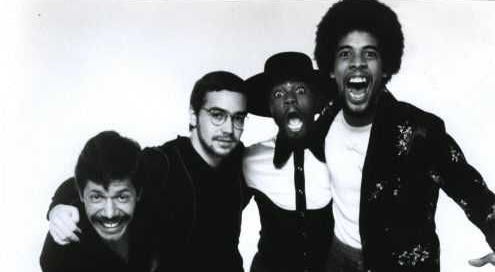


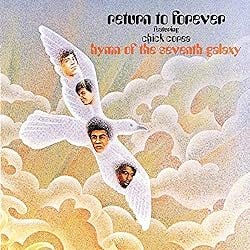


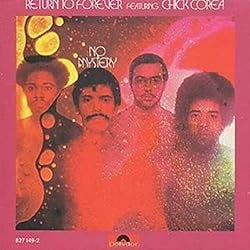
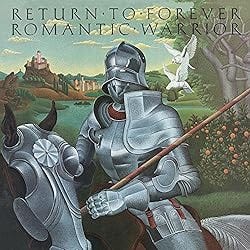
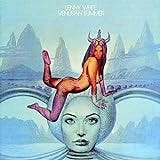
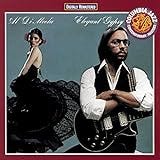

Hey, thanks, Brad, I appreciate your comments very much. I have done a lot of research into the fusion era not to mention being a high school jazz band musician and record buyer at the time, and I'm realizing that it's an area with an interested audience, which it didn't really used to be. I had done a couple of book proposals around comprehensive fusion histories or other ideas in the early 2000s, but the interest wasn't there. I feel like a lot of listeners coming up today will find certain records themselves and get to hear them without a lot of context and that will be to the good.
Yeah, all the major labels still had jazz divisions then, and they put a lot of that stuff under there. But Columbia had to be king. I remember going to a Columbia All Stars fusion show at The Auditorium Theatre in Chicago with Narada Michael Walden, Billy Cobham, Tom Scott, etc. and people were lighting up joints at their seats. Different era, for sure.
Love the early Journey, also the fusion-y Santana of that period as well. Some of the most interesting stuff is what crosses over, not just jazz to rock, but rock to jazz as well. Glad that you've got a bit of immortality hanging in that radio station!
Thanks for your inspirational comments and kind of confirming what I'm remembering and finding about this time and style(s) of music. I can pretty much guarantee that NDIM readers will be getting some more on this topic in the not too distant future.
Insightful and impressive dive, Marshall, into a slice of '70s-era musical pie few have the knowledge or patience to tackle (and, I'm at the front of that line)!
Your aligning RTF and adjacent artists with prog-rockers (Yes, Genesis, Crimson, ELP, et al) was precise, and in the rear-view, it makes me think those groups were pedaling rapidly, trying desperately to keep up! RTF and Weather Report, though, were seemingly doing their things with one arm tied behind their amps, showing the little brothers how it's done!
Thanks for mentioning record labels, a true context hook (for me, anyway) that says a lot about the artists, and their place in the corporate hierarchy (not to mention if and how they might've ended up with airplay). RTF, Weather Report, John McLaughlin (and Mahavishnu), Tony Williams, Stanley Clarke, Al Di Meola, Alphonso Johnson, and others all ended up on Columbia (or associated labels) by the late '70s, and the label's oomph into radio and retail meant unit sales of half-a-million for more than a couple of them (Weather Report's 1977 "Heavy Weather," for example)! Plus, it showed the label was interested in more than just Billy Joel, Springsteen, and Streisand pop million-sellers! They were eager to get quality music to the masses, as well (with the attendant profits if they did so, sure).
Your mention of Neal Schon reminded me of another jazz fusion band....his pre-Perry, 4-piece Journey (also on Columbia)! For 3 albums (1975-'77), they traveled in that exasperatingly (for CBS) hit-free lane, until the label demanded some hits from the band who, at the time, would think nothing of slapping 6-minute jazzy instrumentals and/or songs sung by keyboardist Gregg Rolie on their albums! Hence, the search for a frontman and someone who might contribute 3 1/2-minute hits!
I was music director of the U of Houston station in '75, and for their debut, the CBS rep brought them by KUHF to award me with a deed to a star (their self-titled debut had something to do with space), and I had my picture taken with them. That photo, for all I know (along with that celestial deed) is still hanging on a wall at the station, some 48 years later! I've written about it, but I won't clutter your page, here, with the link. It's easily findable for the interested. Back to you.....well done, Marshall!